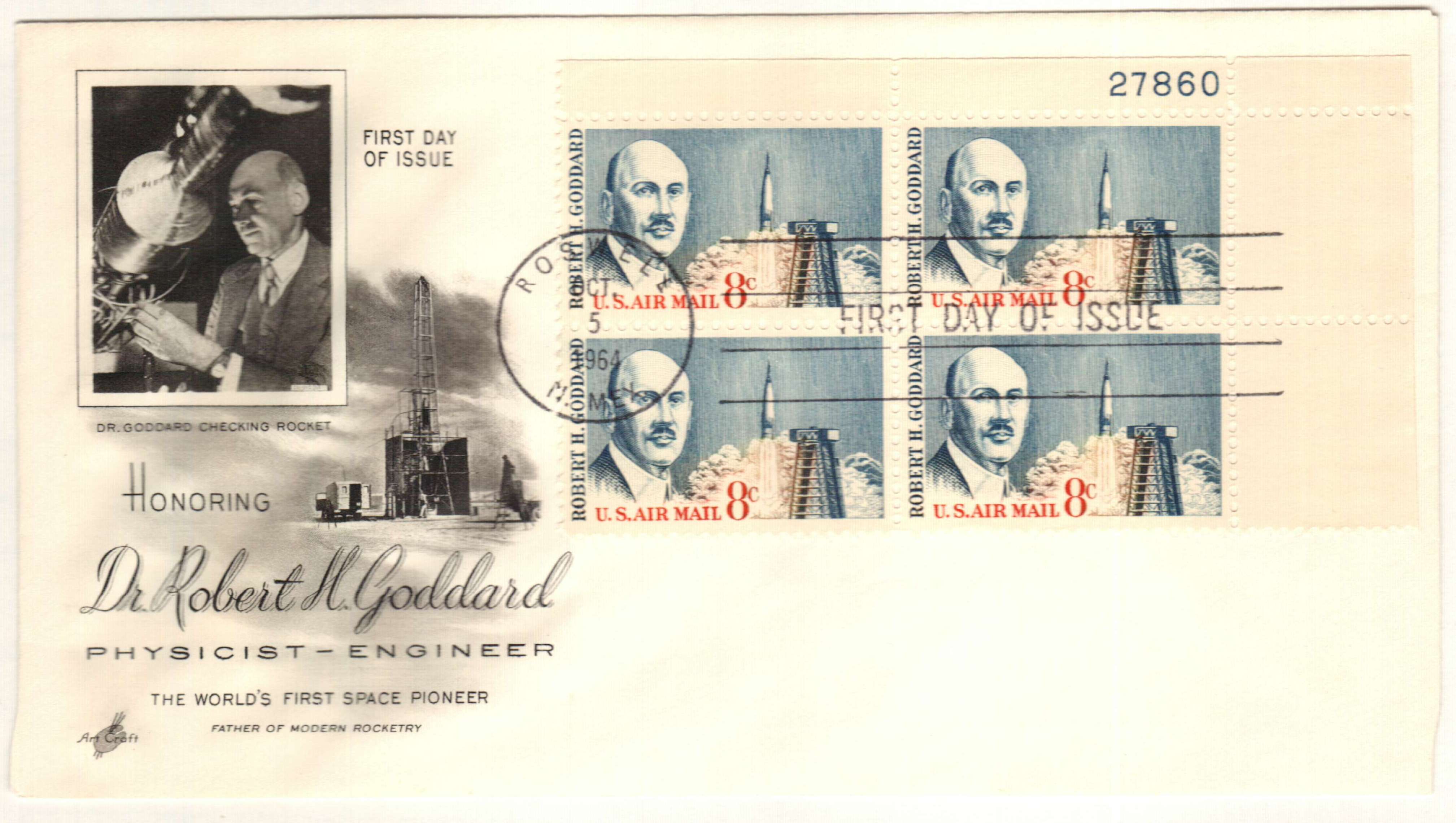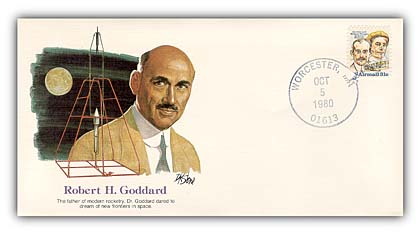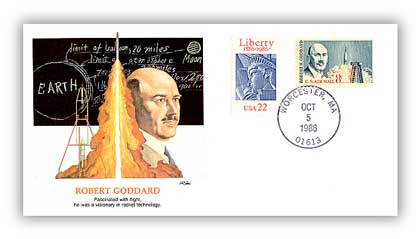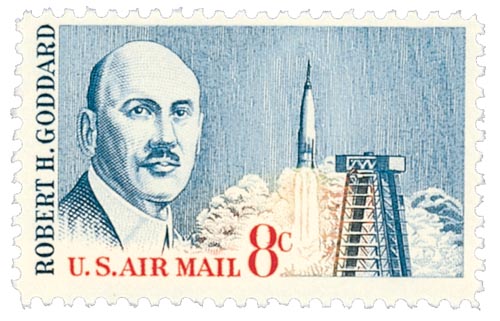
# C69 - 1964 8c Robert H Goddard
1964 8¢ Robert H. Goddard
Printing Method: Giori press printing
Birth Of Robert Goddard
Goddard was fascinated by science at an early age, especially after his father showed him how to generate static electricity through the carpet. Young Goddard believed he could jump higher if he charged zinc batteries with static electricity.

Despite his mother’s warnings that he could “go sailing away and might not be able to come back,” Goddard’s father encouraged his curiosity, buying him a telescope, microscope, and subscription to Scientific American. He was fascinated with flight, especially kites and balloons. From this early age, he got himself in the habit of keeping detailed diaries of his experiments, a practice he carried through to his adulthood.

After reading H.G. Wells’ The War of the Worlds, Goddard became very interested in space. And on October 19, 1899, while climbing atop a cherry tree to cut off dead limbs, he looked to the sky and imagined traveling to Mars. He later said, “I was a different boy when I descended the tree… Existence at last seemed very purposive.” From that day on, he celebrated October 19 as “Anniversary Day” – the day of his “greatest inspiration.”
Goddard graduated from high school as valedictorian and went on to study at Clark University, where he earned his Ph.D. He published his first articles and received his first patents while still a student. Many of his experiments focused on space flight, but he didn’t tell his peers that, as they didn’t consider it real science at that time.

Goddard successfully launched his first rocket on March 16, 1926. He went on to launch another 34 between then and 1941, reaching altitudes of 1.62 miles and speeds of 550 miles per hour. His pioneer work was largely unrecognized during his time but since his death in 1945, a gold medal, a space flight center in Maryland, several schools, and a crater on the moon have been named in his honor.
| Want to create your own This Day in History album? Click here for all the supplies you’ll need. |
Click here for more about Goddard.
1964 8¢ Robert H. Goddard
Printing Method: Giori press printing
Birth Of Robert Goddard
Goddard was fascinated by science at an early age, especially after his father showed him how to generate static electricity through the carpet. Young Goddard believed he could jump higher if he charged zinc batteries with static electricity.

Despite his mother’s warnings that he could “go sailing away and might not be able to come back,” Goddard’s father encouraged his curiosity, buying him a telescope, microscope, and subscription to Scientific American. He was fascinated with flight, especially kites and balloons. From this early age, he got himself in the habit of keeping detailed diaries of his experiments, a practice he carried through to his adulthood.

After reading H.G. Wells’ The War of the Worlds, Goddard became very interested in space. And on October 19, 1899, while climbing atop a cherry tree to cut off dead limbs, he looked to the sky and imagined traveling to Mars. He later said, “I was a different boy when I descended the tree… Existence at last seemed very purposive.” From that day on, he celebrated October 19 as “Anniversary Day” – the day of his “greatest inspiration.”
Goddard graduated from high school as valedictorian and went on to study at Clark University, where he earned his Ph.D. He published his first articles and received his first patents while still a student. Many of his experiments focused on space flight, but he didn’t tell his peers that, as they didn’t consider it real science at that time.

Goddard successfully launched his first rocket on March 16, 1926. He went on to launch another 34 between then and 1941, reaching altitudes of 1.62 miles and speeds of 550 miles per hour. His pioneer work was largely unrecognized during his time but since his death in 1945, a gold medal, a space flight center in Maryland, several schools, and a crater on the moon have been named in his honor.
| Want to create your own This Day in History album? Click here for all the supplies you’ll need. |
Click here for more about Goddard.













